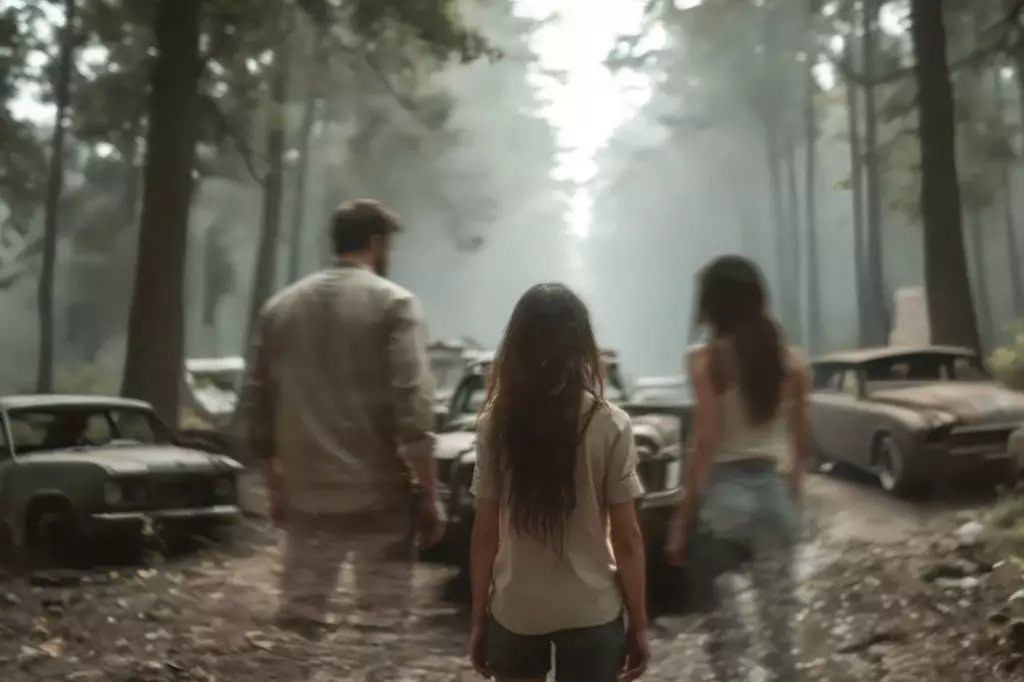The world of cinema is constantly evolving, with fresh talents pushing the boundaries of storytelling. One such example is the collaboration between Calgary’s Peterson Polaris Corp and the Filipino-American filmmaker Tyrone Acierto on the dystopian action-horror feature, “What’s Left Of Us.” This partnership highlights an essential trend in the film industry: the merging of diverse cultural narratives to enrich the storytelling landscape. Acierto, known for deeply examining themes like identity and survival, crafts a narrative that isn’t just a reflection of a bleak future but a mirror held up to our present circumstances.
Acierto’s previous works, including “The Grave Bandits” and “Watch Me Kill,” showcase his adept handling of socio-political themes, a skill he wields deftly in this upcoming film. The filmmaker lives in the intersection of art and urgency, where horror is not merely a genre but a means to provoke thought and inspire dialogue around complex human experiences. In a world rife with disinformation and historical revisionism, Acierto’s work challenges viewers to reconsider their understanding of truth and memory.
From Concept to Reality: The Power of Partnership
The involvement of Peterson Polaris Corp, helmed by Michael Peterson, is significant. Peterson has a reputation for producing compelling genre films, such as “Bloodthirsty,” which left a mark at Fantastic Fest. His proficiency in the horror genre is essential, as it balms the harsh realities that Acierto seeks to explore. Peterson’s portfolio not only solidifies his credentials as a producer but also reflects a keen instinct for identifying powerful narratives. His enthusiasm for this project speaks volumes: “Bringing the creative teams from both Canada and the Philippines is something we have been exploring for a few years,” he stated, recognizing the potential of shared cultural storytelling to captivate global audiences.
This is an exciting era for films that traverse geographical barriers to combine experiences and ideas. The co-production model exemplified by projects like “What’s Left Of Us” serves as a beacon for future collaborations. Peterson’s and Acierto’s joint announcement has the scent of revolution—not just in the stories told but in the very manner they are brought to life.
Filming in a Foreign Landscape
What’s also remarkable about the film is its setting: to be shot in the Philippines with an international cast. This localizes the narrative while providing a vital backdrop that enhances its theme of survival in a corrupted world. The Philippines, with its rich history and cultural landscape, provides an ideal canvas for a story that grapples with identity and memory. This decision enriches the film’s narrative texture, allowing audiences to witness the socio-political challenges echoing in our own lives, albeit through a lens tinted by speculative fiction.
Producers like Wilfredo Manalang from Fusee further ground the project in authenticity. By bridging North American and Asian markets, Fusee’s history of producing inclusive and innovative films has set the foundation for Acierto’s vision to evolve. Manalang’s insight that “memory, identity and even history are constantly under siege” resonates profoundly in today’s climate, where the search for truth is a daily battle.
A Dystopian Reflection
“What’s Left Of Us” is not simply an action-horror film; it is a manifesto on the fragility of truth in contemporary society. The narrative portrays a relentless fight against a debilitating memory-erasing infection, presenting profound questions: What does it mean to truly remember? How do we forge an identity amidst the chaos of collective amnesia? The creative synergy between Acierto and Peterson not only aims to entertain but also seeks to provoke, urging viewers to confront the uncomfortable realities lurking beneath their everyday existence.
The film’s exploration of the fight for survival amidst a backdrop of altered realities feels especially pertinent. As misinformation flourishes in various forms, the fight against an infection that erases memory is a haunting metaphor for the societal struggle to hold onto essential truths. Acierto’s vision, supported by Peterson’s production prowess, promises an immersive experience that leaves audiences contemplating their own realities long after the credits roll.
By marrying their diverse talents, Peterson and Acierto are not merely creating a film; they are crafting a dialogue about existence in a fractured world, challenging viewers to grapple with their understanding of history, identity, and memory itself. The project stands as an impressive testament to what can be achieved through collaboration, setting a stage for innovative future endeavors within the cinematic realm.


Leave a Reply